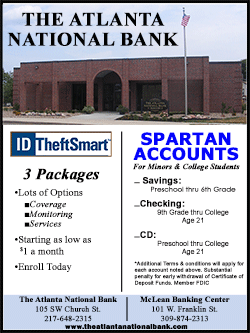|
After Hurricane Matthew,
five ways to deal with damage
 Send a link to a friend
Send a link to a friend
 [October 07, 2016]
By Beth Pinsker [October 07, 2016]
By Beth Pinsker
NEW
YORK (Reuters) - After Hurricane Matthew blows by the U.S. Southeast,
the insurance adjusters will come out.
Here are five tips on dealing with the aftermath, from Loretta Worters,
vice president of the Insurance Information Institute trade group:
1. Your roof blows off
Windstorm damage is covered under standard homeowners policies, both for
private homes and privately owned apartments, and under renters policies
for damage to personal belongings. But there may be significant
differences in deductibles, depending on your state. Policy parameters
may vary when it comes to the storm's severity. In Florida, you may pay
more - up to a 15 percent deductible - depending on your proximity to
the coast.
Any rain damage to the interior and your furnishings that occurs because
of a hole blown in your building will also be covered, but not if the
water is rising from the ground in a flooding situation.

2. Street flooding swamps your house
Flooding from the ground up is not covered by standard homeowners
policies. No matter how many times insurance professionals point this
out, people tend to forget about flood coverage or just do not want to
deal with the additional costs. You need to get a flood policy directly
from the government, with prices varying by risk zones (www.floodsmart.gov).
"People will buy a Starbucks coffee every day for a year, and that's OK.
That's not too far away in price from getting the flood insurance, but
they won't get it," says Worters.
For those living in apartment buildings, it is important to find out if
the building has flood coverage as well, Worters notes.
3. A tree falls on your house
Tree damage is one of the most common problems after a big storm. After
the storm, however, adjusters tend to the biggest claims first. You
might wait a while for your turn, especially if there are power outages
in your area.
Worters says it is fine to go ahead and make minor fixes to prevent more
damage from happening. Just take pictures first and do not risk any
personal injuries walking on shaky roofs or climbing a teetering tree.
To prepare ahead of time, take a photo inventory of your house and store
it online. The Insurance Information Institute provides a free app
called Know Your Stuff (knowyourstuff.org/) for this purpose.
[to top of second column] |

Homeowner Don Appell prepares to board up one of the windows at his
home ahead of Hurricane Matthew in Cherry Grove, South Carolina,
U.S. October 6, 2016. REUTERS/Chris Keane

4.
Your car gets submerged or damaged by debris
Auto damage is probably the easiest disaster to deal with because storm damage
is covered under the comprehensive section of your auto policy. This type of
coverage is optional in most states, but many car owners take it out anyway.
It
does not matter if your car is parked on the street or in a garage when the
damage happens, if it is hit by a falling branch or by a floating hazard. "It's
very clear-cut," says Worters.
5. Your insurance company goes bankrupt
When Hurricane Andrew hit Florida in 1992, it caused $24 billion in damages to
Florida and Louisiana, according to the Insurance Information Institute. Over
the ensuing years, seven of the 10 costliest hurricanes have involved Florida.
That has driven insurance companies out of business and raised rates in other
states as national companies try to recoup their losses.
But the industry is on good financial footing right now, according to Worters,
with a record surplus industry wide of more than $680 billion. In case of
problems with smaller companies, there is a guarantee fund that protects
policyholders if their provider goes belly-up.
"They're in the best shape ever to pay claims," says Worters.
(Editing by Lauren Young and Jonathan Oatis)
[© 2016 Thomson Reuters. All rights
reserved.] Copyright 2016 Reuters. All rights reserved. This material may not be published,
broadcast, rewritten or redistributed.

 |